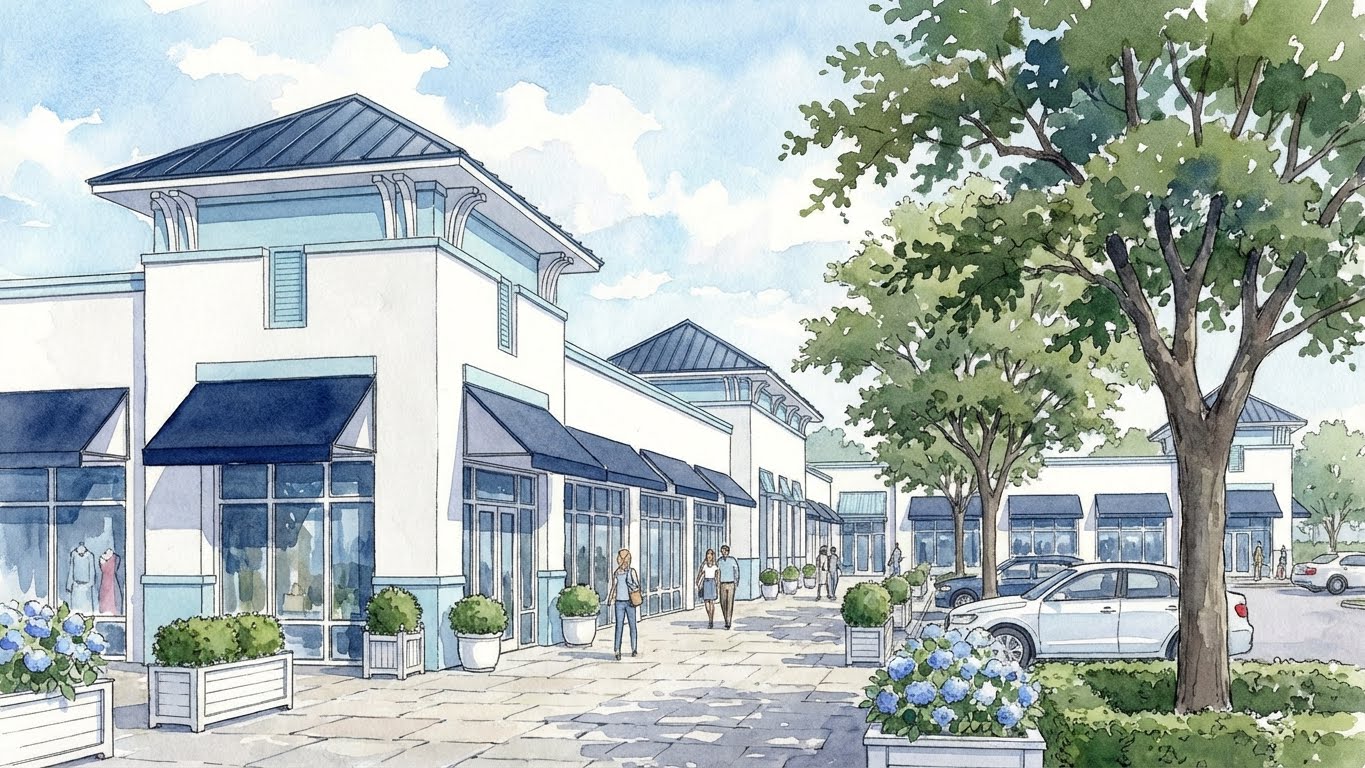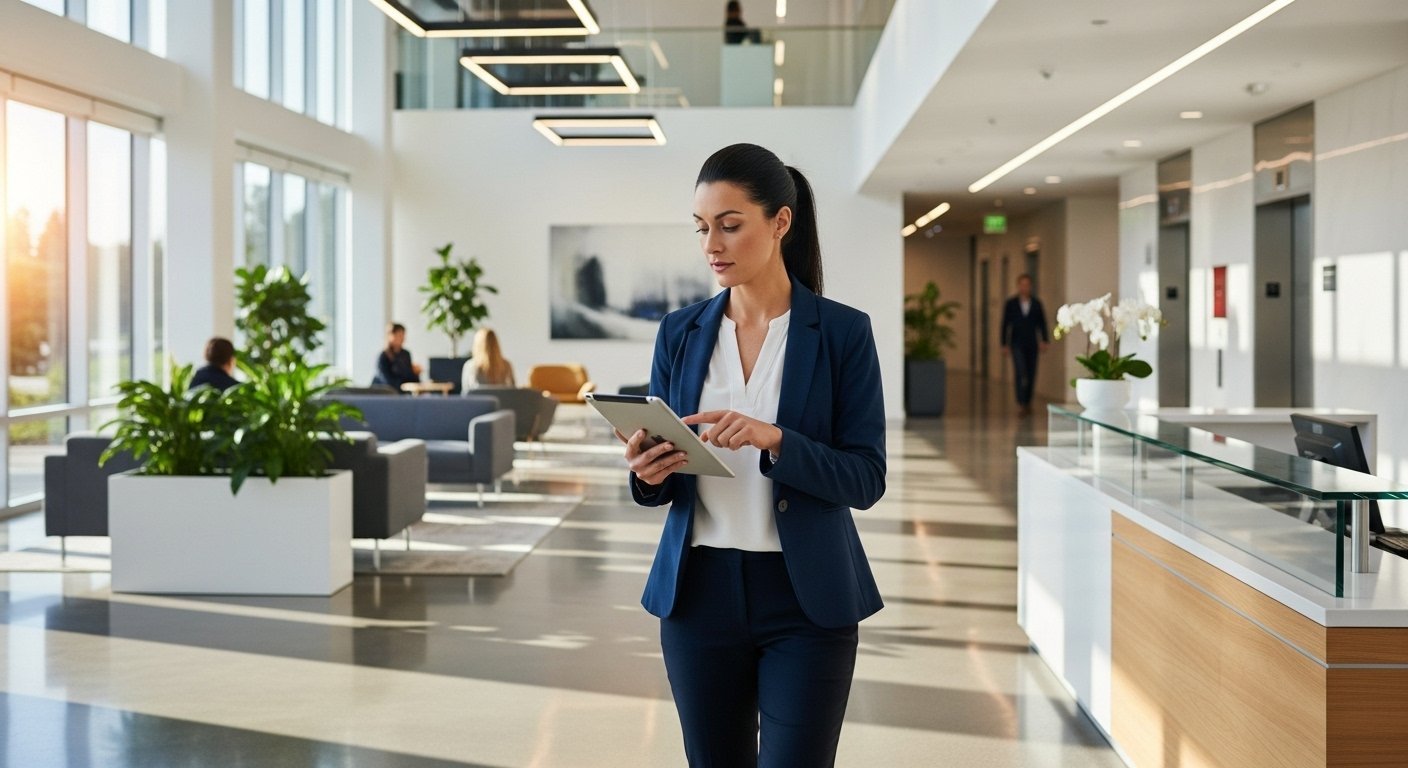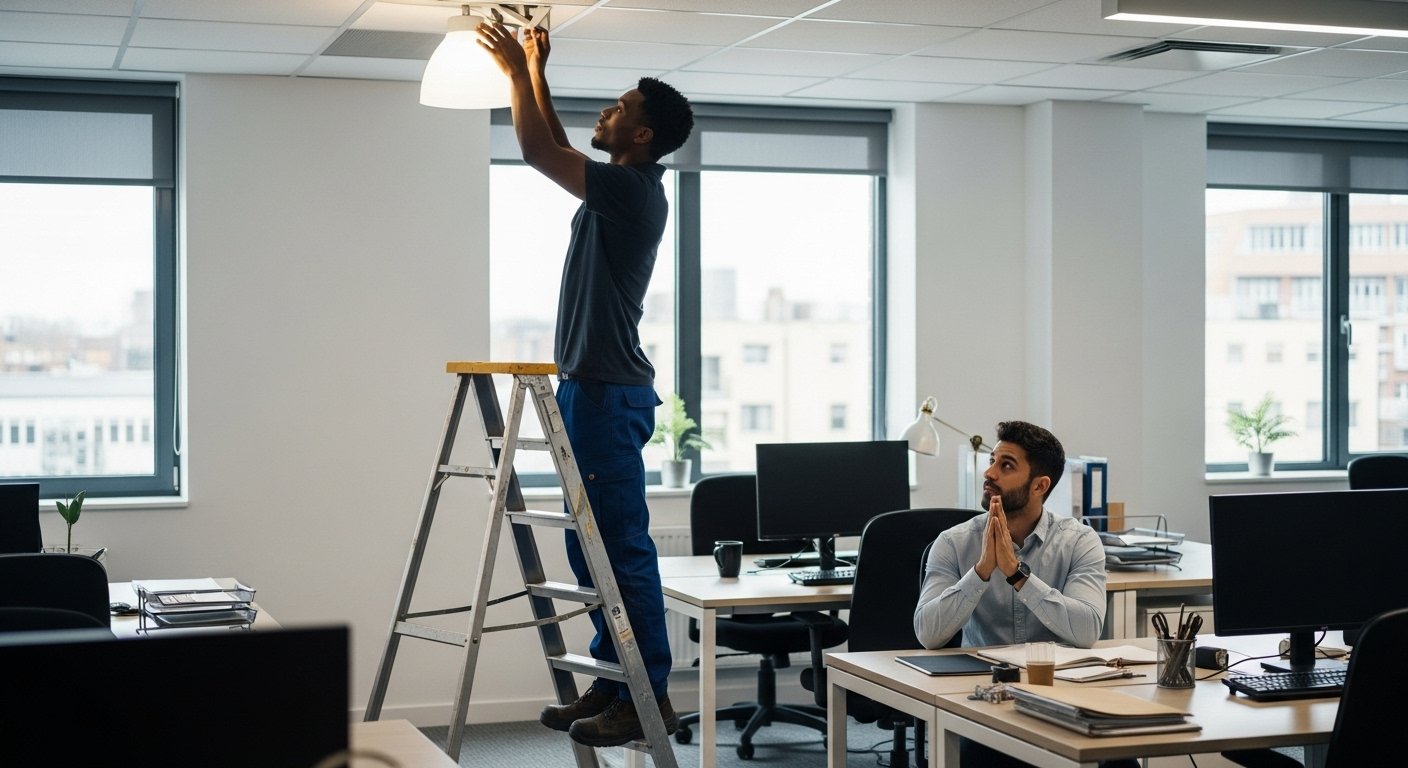You've probably noticed that tenant’s expectations are higher than ever when it comes to the building they choose to occupy and their systems. Today’s tenants expect seamless, tech-driven ways to engage your building, and they have plenty of options if your property doesn’t measure up. In fact, smart buildings with advanced security systems and touch less access controls are quickly becoming standard in top-tier properties.
Why are access expectations rising? A few big shifts in recent years have changed what tenants look for. The workforce is getting younger and more tech-savvy, with Millennials and Gen Z now making up a large portion of employees and business decision-makers. These generations grew up with smartphones and smart devices. They tap a phone to pay for coffee, unlock their cars with apps, and even board flights using digital passes.
Naturally, they expect a smart access control experience at work and in any building they use. At the same time, the pandemic accelerated the push for touchless entry and remote management, making technologies like mobile credentials and cloud-based access control not just nice-to-haves but must-haves. The result is a “new normal” where you, as a property owner, need to offer more convenient, secure, and flexible building access control systems to keep tenants satisfied.
Modern Tenants Demand Smarter Access
Tenants today want building access control that is effortless, secure, and responsive to their needs. When a tenant or their employee arrives at your office building or industrial park, they don’t want to fumble with physical keys or worry about finding a guard to unlock a door. Keyless entry, whether through key fobs, swipe cards, or mobile phone credentials, is increasingly expected. Office and retail tenants share similar mindsets: they appreciate being able to enter with a smartphone app or badge and not having to carry a bulky key ring or wait for assistance.
Convenience isn’t the only factor. Your tenants also expect safety and security to be built into the access system. They want to know that only authorized people can enter the building or specific areas, and that there’s an audit trail of who comes and goes. Modern commercial access control software addresses this by letting you set up individual permissions, schedules, and instant revocation of access if needed. For example, you can ensure that each tenant company manages its own employee access levels without compromising overall building security.
Many cutting-edge office buildings have adopted solutions like mobile access control, where a person’s smartphone acts as the key. This adds convenience (people are less likely to forget their phone than an access card). It also supports touch less entry, a feature that became highly valued for health reasons during COVID-19. In a global survey, 43% of organizations said they would deploy touchless access capabilities, and 41% wanted any new access system to include mobile access.
Moreover, today’s tenants are looking for integrated experiences. They expect that the same level of tech convenience they get at home will be present in their workplace or business locations. If you operate a mixed-use property or life science building, this might include secure zones where only certain personnel can enter (like labs or sensitive storage areas) with multi-factor authentication.
Retail tenants might expect after-hours access to their shops via a secure code or app instead of a physical key pickup. Industrial tenants may need integrated gate access for delivery trucks that can be opened remotely. Meeting these expectations requires a unified access control system software that can handle multiple user groups and use cases.
Why Meeting Access Expectations Matters
Upgrading your access control isn’t just about following a trend – it has real business implications for tenant attraction and retention. Think about the competitive CRE market: prospective tenants tour several properties before choosing one. If your building can boast smart access control features like app-based entry, visitor management kiosks, or biometric locks at sensitive areas, it immediately stands out as a forward-thinking, safe place for their business. On the flip side, if a prospective tenant sees manual sign-in sheets or hears that lost keys are a common issue, they might worry that the building is behind the times.
Modern companies often include building technology in their must-haves because it affects their own employees’ experience. In fact, industry trends show that companies are moving toward higher-quality buildings with better amenities, which is pushing owners to invest in upgrades that improve the tenant experience. Access control is a key amenity in this equation.
There’s also a clear link between meeting these rising expectations and keeping your existing tenants happy. Satisfied tenants are far more likely to renew their leases, saving you the cost and hassle of filling vacant space. One study found that 73% of tenants in smart buildings (buildings equipped with advanced tech like automated systems and modern access control) reported higher satisfaction due to the improved comfort and convenience.
It makes sense: when people can enter the building easily, feel secure throughout the property, and use amenities without friction, they associate that positive experience with you as the landlord. They notice when operational inefficiencies, like waiting in line to get a visitor badge or struggling to get a replacement access card, are no longer an issue. High satisfaction encourages renewals, and it can even turn tenants into advocates who refer other businesses or expand their footprint in your property.
Conversely, failing to meet access expectations can directly contribute to the pain points owners dread, such as tenant turnover. If tenants feel frustrated by something as fundamental as getting into their office, or if they encounter security lapses (like doors that don’t lock properly or unknown people accessing the building), they may question the professionalism of the property management. In an era where tenant experience is very important, these details matter.
By investing in better door access control software and procedures, you demonstrate a commitment to service and safety. This boosts tenants’ confidence in the property. As one business outlook noted, using mobile credentials and cloud-based access control can increase occupants’ safety, limit owners’ liabilities, and streamline building operations. In other words, modern access systems protect your tenants and also protect you, by reducing the chances of unauthorized entry or security incidents that could lead to liability issues.
Enhancing Transparency and Tenant Communication
Rising expectations aren’t limited to physical hardware, they also extend to communication and service. Tenants today appreciate transparency and prompt communication from their property managers. If a building’s access control system or any service goes down, they want to be informed immediately and know that a fix is underway. This is where a tenant communication platform becomes valuable. By using a dedicated portal or mobile app to send updates, you ensure everyone gets the message about, say, a temporarily locked entrance or a planned maintenance that might affect access. Properties that leverage such platforms have seen measurable improvements in tenant sentiment. One study found a 15% increase in tenant satisfaction and a 12% boost in lease renewals after implementing a tenant engagement app.
Transparency also means giving tenants visibility into the services you provide. With traditional methods, a tenant might submit a request (like a door repair) and then hear nothing until the issue is fixed. With modern tools, you can update them in real time (“Lock on Suite 500 repaired at 2:00 PM”) which builds trust. Some of the best software for commercial property management combines access control with communication features, so tenants use one interface to get building news, request services, and manage access permissions for their team. This kind of integration fosters better communication between you and your tenants, ultimately boosting tenant satisfaction. When you evaluate options, consider if an integrated solution could work for you, but remember, even an email list or text alert system is better than silence when issues arise.
When everyone is using an app to access the building, it means you already have a direct line of communication with every tenant and authorized user. Since they all have the app on their phone, you can send push notifications instantly to keep them updated about anything that affects their experience. Whether it’s an event in the lobby, a new amenity offering, an upcoming fire drill, or the status of a work order. You’re cutting down on the friction that happens when updates rely on hallway conversations, paper signs, or missed emails. Instead, communication is tracked, timely, and clear, helping you prevent misunderstandings and maintain a smooth daily flow throughout the building.
Having an access control provider is a start. But when access is fully baked into how your building runs, from communication to amenities to service delivery, it becomes a real driver of tenant satisfaction, retention, and building performance. The best commercial real estate software doesn’t treat access as a standalone feature. It brings everything under one roof, unifying daily operations with the tenant experience in a way that feels seamless. That creates a healthy and efficient building ecosystem where issues are addressed early, communication flows easily, and minor complaints do not snowball into dissatisfaction or churn. When tenants feel like everything just works, they stop wondering if there is a better building somewhere else. Cove helps you deliver that kind of experience. It is a smarter and simpler way to run your building and build loyalty in the process.

.png)
.jpeg)

.jpeg)
%20(1).jpg)

